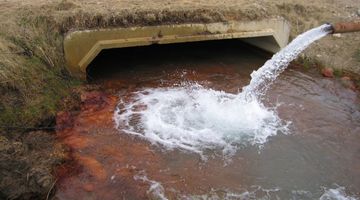ESR scientist Dr Brent Gilpin discusses the need to identify the origins of any faecal matter in our drinking water, as bacteria and viruses in human poo can make us ill. Brent’s research involves determining a method of identifying species-specific markers in poo so that he can tell if the poo contaminating our water came from ducks, cows or humans.
Transcript
DR BRENT GILPIN
Human contamination is obviously the primary focus and the biggest concern that people have, because human pollution can contain a lot of viruses and other things that are infective of humans. Animal faecal pollution is perhaps of a lower risk but is still risky because of the presence of zoonoses and other organisms from animals which can cause disease in humans. So a big part of our work is looking at a whole range of animals that are present in New Zealand, to identify both the indicators that are present in them, the pathogens that are present in them, and also the source-specific indicators that may be in them. So we go out collecting poo from cows, sheep, deer, possums, ducks, seagulls – really all the animals and birds that may be polluting the waterway – and try and characterise the microbes that are in them. Part of our work is to find bacteria that are specific to certain faecal sources, so ones that are only found in human faecal material, or only found in ducks, or others. The problem is, is most of the bacteria don't obey the strict rules of only staying in one animal. So really what we end up with is things that are predominantly found in a source and are very rarely, or occasionally, found in some of those other ones. And really what we are trying to do is just find one, or two, or three from each source that we can say are probably specific to that source. And then we look at them in the overall picture – when you combine several together, you can get more confident that this is probably from a human source, or not from a human source. Because, in many cases, saying it’s not human can be almost as valuable as saying it is human. We would love to be able to pinpoint specifically that faecal contamination is from a goat, or a cow, or a sheep, and farmers would like us to be able to tell cows on which farm, and sheep from which farm, but that's probably a tasks that may never be achievable and is certainly going to require a lot of work. So I guess our first level is distinguishing between human sources and from non-human sources and from those that are from different animal sources – can we tell the difference between, for example, some from ruminants as opposed to others such as from dogs, which have a different digestive system? And I guess we are trying to break it down into groups, and we will get more and more specific as we find more and more tools.
Acknowledgements:
Julieanne Savage
Elaine Moriarty & Naveena Karki, ESR, Christchurch
Brittney Bush Bollay
The New Zealand Biotechnology Hub


